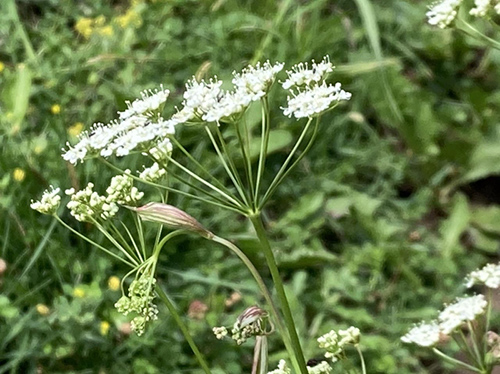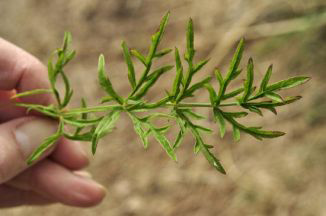Contents
Unlike anise, burnet saxifrage does not have hair on its stem and fruits. Its French name, bocage or petit Persil (little parsley) de bouc (billy goat), derives from the typical billy goat smell that the plant, especially its root, gives off.

Healing Properties and Indications
The whole plant, especially its root, contains tannin, essential oil, saponins, pimpinelline, and resins. Its main effect is stimulating the secreting activity of the respiratory airways, kidneys, and skin cells. These are its properties:
- Mucolytic, expectorant, and antitussive: The plant increases the production of bronchial secretions, making them more fluid and thus more easily eliminated at the same time that cough disappears. It is recommended for bronchial catarrh and hoarseness.
- Diuretic and sudorific: The burnet saxifrage is recommended for those who wish to eliminate toxins and metabolic waste from the blood, especially for arthritis, gout, and kidney dysfunction.
- Calms, nervous excitation.
Greater Pimpernel
The greater or false pimpernel (Pimpinella major [L.] Hudson = Pimpinella magna L.) is similar to the small pimpernel or burnet saxifrage regarding their botanical features and properties. Unlike the anise, but like the small pimpernel, the greater pimpernel does not have hair on its stem and fruits.

In many places, the common names of both species are interchanged or mistaken, sometimes both being known as Pimpinella. Their main difference is also found in their most common terms: the burnet saxifrage is called a small pimpernel, and the false pimpernel is called a greater pimpernel.
Burnet Saxifrage Scientific Facts

- Other names: Pimpernel, pimpinella, small pimpernel.
- French: Boucage, petit persil de bouc.
- Spanish: Pimpinela blanca.
- Environment: Slopes, pastures, and calcareous soils all over Europe.
- Description: This is a vigorous plant of the Umbelliferae family. It has an upright, hollow stem growing from 0.3 to 1 m high and pink or white flowers growing in compound umbels with an 8—to 15-fine radius.
- Parts of the plant used medicinally: The root gathered in Spring (fresh) or Fall (dry), and the umbels.
How to use Burnet Saxifrage
- Decoction with 30 g of root per liter of water, boiling for ten minutes. To achieve a more powerful sedative effect, add 30 g of flower umbels.
DISCLAIMER: All content on this website is presented solely for educational and informational objectives. Do not rely on the information provided as a replacement for advice, diagnosis, or treatment from a qualified medical expert. If you are pregnant, nursing, or have any preexisting medical concerns, talk to your doctor before using any herbal or natural medicines.
REFERENCES
- George D. Pamplona-Roger, M.D. “Encyclopedia of Medicinal Plants.” George D. Pamplona-Roger, M.D. Encyclopedia of Medicinal Plants. Ed. Francesc X. Gelabert. Vols. 1 San Fernando de Henares: Editorial Safeliz, 2000. 322. Print.
- BJU International (study on diuretic effects): https://pubmed.ncbi.nlm.nih.gov/10674848/
- European Medicines Agency (EMA) assessments: https://www.ema.europa.eu/en
- Scientific journals – search for studies on “Pimpinella saxifraga” on platforms like PubMed https://pubmed.ncbi.nlm.nih.gov/
